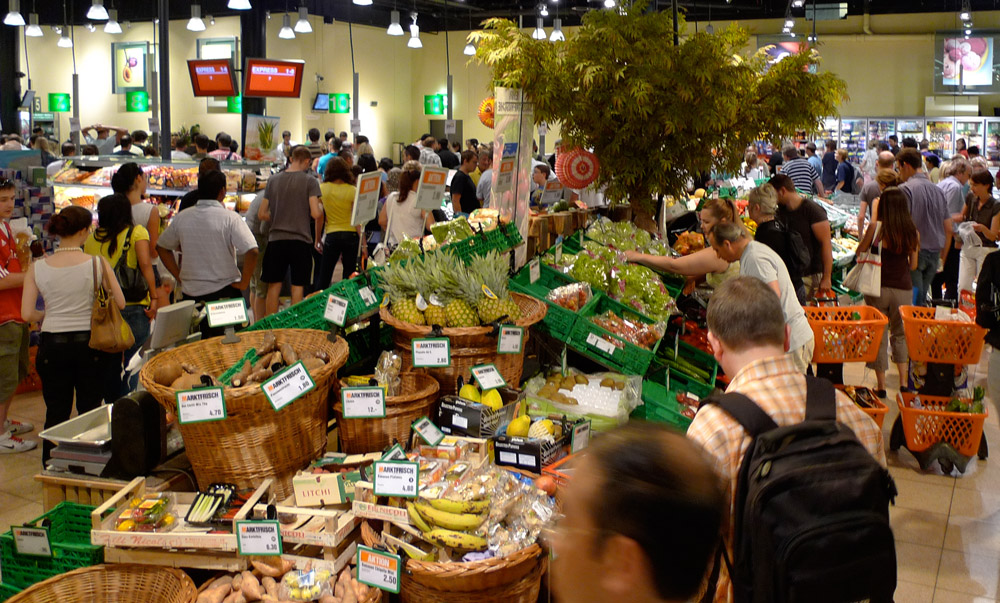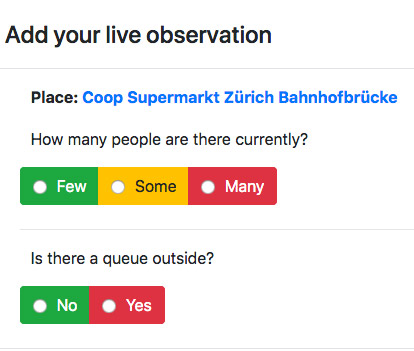#41: Shopping with Maximilian
The ShopSensor app determines which shop to go to at specific times to lower the risk of infection with COVID-19. The tool was developed by a PhD candidate at GIUZ in his spare time.

“I wanted to use my skills for something that people could use to help each other during the corona crisis,” says Maximilian Hartmann, a PhD candidate in the Geocomputation group. Over the past few weeks, he thus developed a web app that automatically compares customer frequencies in the shops of a certain area based on publicly accessible data. The app provides users with a recommendation as to where they should go shopping to keep the risk of COVID-19 infection as low as possible.
Observing changes in the public’s mobility
The idea for this project was born during a virtual Hackathon event organized by the Statistical Office of the Canton of Zurich together with the Swiss Opendata scene in the first week of the Swiss-wide lockdown mid-March. A mixed bag of participants started to collect, process and openly distribute data about the health care system, the economy and the general public. One of the challenges involved assessing changes in public mobility patterns. “First, the focus was on capturing how many people where in which shops at a given time,” says Maximilan. This is possible by mapping the wireless networks in the vicinity of mobile devices. The signal strength indicates how close the device is to the source of a network that belongs to a grocery shop, for example.
The app then stores the historical development of this data and compares it to current measurements. “Let’s say I want to go shopping in two hours. I can use the app to check customer frequency levels in the past - for instance last week at the same time - while also taking the current development into account," says Maximilian. Based on this data, the app provides a ranking of shops in a given area that are best for avoiding crowds.
Users help improve the app

For many, especially smaller shops, this data is not yet available. This is where the users of ShopSensor come into play. They can share how many customers are currently in a shop in real time and whether there is a queue in front of the shop. By actively contributing their observations, users can help increase the data set and improve the reliability of the app.

"This citizen science approach is an important aspect of the app," says Maximilian. The inspiration came from the Citizen Science Winter School led by the UZH Graduate Campus in January this year.
Nevertheless, the app will have to take a back seat in the near future. The PhD candidate will now shift his focus back to his dissertation, for which he has to present his concept in a few weeks.
